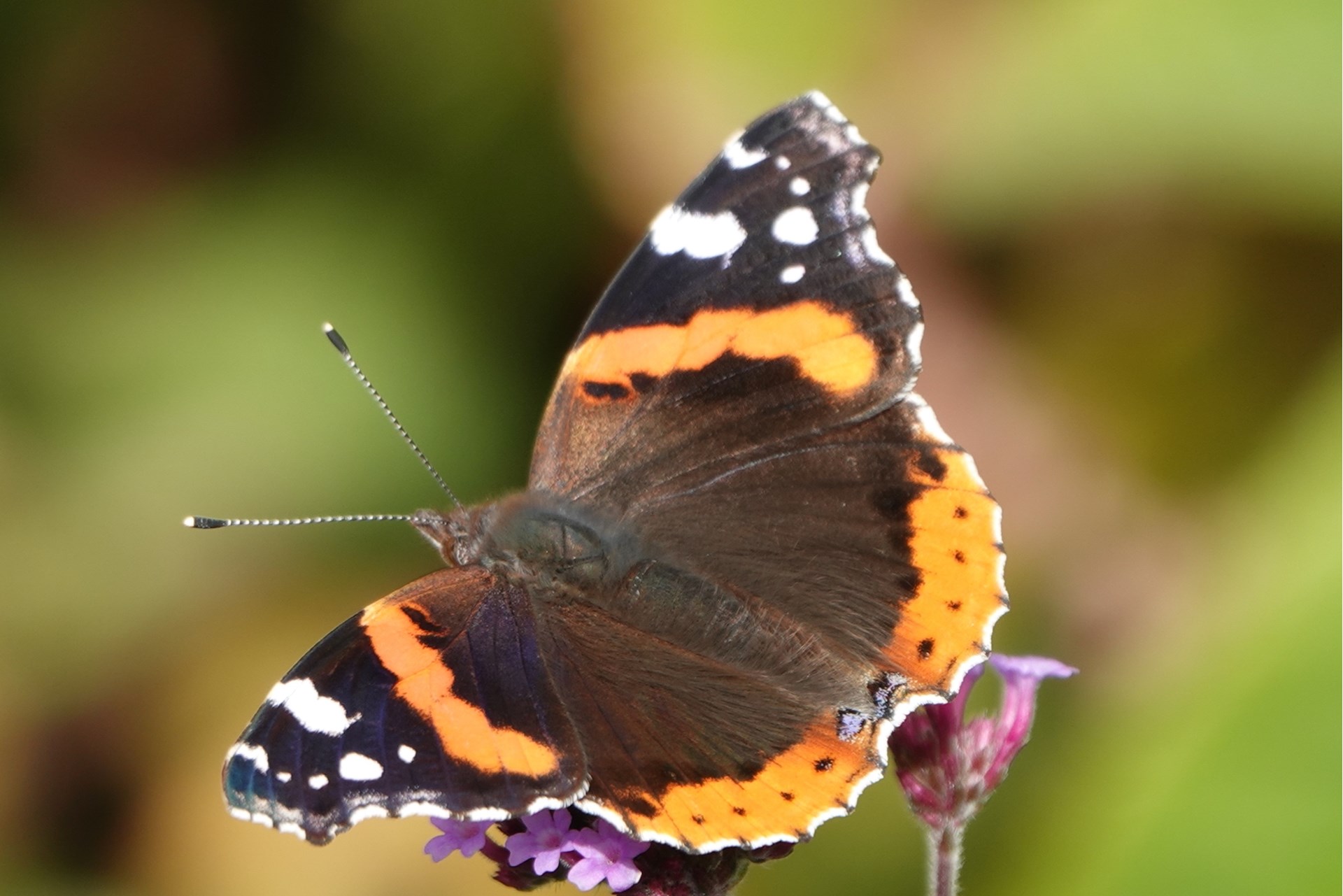Wildlife jottings Apr 2023
The days are warming up and Summer is on the way. As I write this in April the first few butterflies have appeared in the village. I will devote this months article to three butterflies who have three different ways of surviving:
- A resident who survives as a butterfly for most of the year (the Brimstone)
- A resident who survives the winter as a pupa (the Orange-tip)
- A migratory butterfly (the Red Admiral)
The Brimstone is the most obvious butterfly at this time of year.
This bright yellow nomadic butterfly moves around on the lookout for a good food supply. By comparison with other butterflies, they have a long tongue which means they can reach into plants for nectar, that other butterflies with a shorter tongue cannot reach. They particularly concentrate on purple flowers, such as wild teasel, purple loose-strife, buddleia, and thistles.
The new adult butterflies emerge in July, usually the males before females, giving the males a chance to establish a territory. Males and females meet in a spiralling dance and eventually bottle shaped eggs are laid on the underside of leaves.
Approximately two weeks later the caterpillar emerges, proving a great food source for birds such as warblers and tits. The caterpillar turns into a pupa; they exist in that form for 2 weeks. From there the Brimstone butterfly emerges, in August or thereabouts. This butterfly is long-lived.
In the winter months the adult butterflies hibernate often in woodlands under the leaves of evergreen leaves, such as holly and ivy. Sitting there all winter waiting for the warmer days of spring.
They emerge on the wing on warm days, so we can see them early in the year, sometimes even in February. When they first emerge, they will find a sunny spot and open their wings to warm them. By the time we get to April they are a common garden butterfly.
So, the Brimstones we are seeing now emerged as a butterfly last Summer and have survived throughout last winter.
The other garden butterfly of this time of year is the Orange-tip. Their tactic to survive the Winter months is different - they are a pupa and only emerge as a butterfly in April and May. They exist as a pupa for 10 months. The pupa is either green or brown and looks a bit like a seed pod.
Once they turn into butterflies the males are obvious with their orange tipped wings, as they patrol along borders and roadside verges. They are conspicuous to any predator when flying – much less so when settled with their wings closed.
They are, however, distasteful to birds. Their main food sources as a caterpillar mean they accumulate large amounts of bitter mustard oils. Once a bird was tried to eat the adult butterfly, they soon learn not to try again.
As a caterpillar they feed on the seeds of developing plants, lying along the top of the pod and beautifully camouflaged. However, other Orange-tip caterpillars will eat one of their own.
And the final butterfly to mention, which will appear shortly is the Red Admiral. This is the butterfly most of us will remember all the way back to our childhood. Its colouring of red, white, and black is so contrasting it is difficult not to see them and admire them.
They were originally called the Admiral probably because their colouring is similar to the Royal Navy Ensign that was hoisted when an Admiral was onboard ship. In the 1749 book The English Moths and Butterflies it was called Admirable, which later was changed to Red Admirable. From the early 19th century, we reverted to its original name, and it became Red Admiral.
The first Red Admirals to reach us each year have migrated from North Africa / southern Europe. There will then be a succession of migrations coming into the country over the summer months from other parts of Europe – I find that incredible, such a delicate species can fly so far.
These butterflies struggle to survive our cold winters, although with milder winters some now do remain in the south of the UK over winter.
In the Autumn there is a reverse migration back to where they started from.
Their primary foodplant is nettles – so a good excuse not to cut down all the nettles in our gardens. The female Red Admiral is capable of laying large numbers of eggs. A single female was recorded in captivity as having laid 700 eggs. Amazing!
